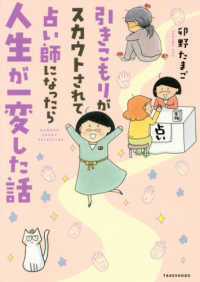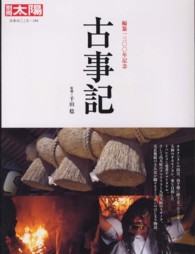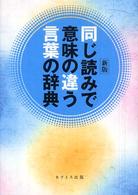Full Description
This volume focuses on early modern Italy and some of its key multilingual zones: Venice, Florence, and Rome. It offers a novel insight into the interplay and dynamic exchange of languages in the Italian peninsula, from the early fifteenth to the early seventeenth centuries. In particular, it examines the flexible linguistic practices of both the social and intellectual elite, and the men and women from the street.
The point of departure of this project is the realization that most of the early modern speakers and authors demonstrate strong self-awareness as multilingual communicators. From the foul-mouthed gondolier to the learned humanist, language choice and use were carefully performed, and often justified, in order to overcome (or affirm) linguistic and social differences. The urban social spaces, the princely court, and the elite centres of learning such as universities and academies all shared similar concerns about the value, effectiveness, and impact of languages. As the contributions in this book demonstrate, early modern communicators — including gondoliers, preachers, humanists, architects, doctors of medicine, translators, and teachers—made explicit and argued choices about their use of language. The textual and oral performance of languages—and self-aware discussions on languages—consolidated the identity of early modern Italian multilingual communities.
Contents
Introduction Eva Del Soldato and Andrea Rizzi Part I: Speech in the City 1. Rocking the Boat: Language and Identity on an Early Modern Gondola Andrea Rizzi and Elizabeth Horodowich 2. Languages Around the Pulpit in Quattrocento Florence Peter Howard 3. Latin and Vernacular in Florence During the Mid-1430s Luca Boschetto Part II: Textual Authorities, Innovations, and Subversions 4. Hard Times, Great Expectations, and Our Mutual Friend Cicero: The Loschi-Salutati Controversy Stefano U. Baldassarri 5. Latin and Italian Vernaculars in Architectural Literature from the Middle Ages to the Renaissance Anna Siekiera 6. Vernacular Doctors: Philology, Medicine, and Leisure at the Florentine Academy Eva Del Soldato 7. Latin in Lucrezia Marinella's Essortationi alle Donne (1645): Subverting the Voice of Authority Amy Sinclair Part III: Beyond Latin: Greek, Hebrew, and Arabic 8. De utroque fonte bibere: Latin in the Teaching of Greek Grammar During the Renaissance Federica Ciccolella 9. The Multilingualism of Don Isaac Abravanel Cedric Cohen Skalli 10. "This Language Is More Universal Than Any Other": Values of Arabic in Early Modern Italy Mario Casari








